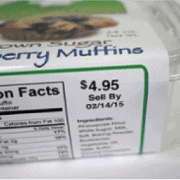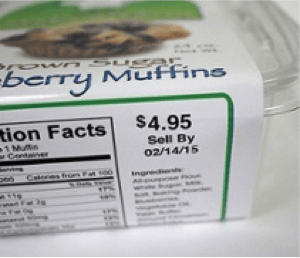Case Coding of Food Dates Soon to Change
Confusion over “Best By”, “Use By” and “Sell By” dates has contributed to massive amounts of food waste in the US. This confusion stems from conflicting understanding of coded dates safety and quality meaning. The impact? ….Consumers are likely to throw away food that has passed the date that’s labeled on the package even if it’s just a sell by date and/or is perfectly safe to eat.
To combat this issue, Congress recently introduced legislation to standardize food date labeling. “The Food Date Labeling Act” aims to reduce consumer confusion, simplify regulatory compliance for companies, and cut supply-chain and consumer waste of food and money. The bill also establishes a uniform national system for date labeling that clearly distinguishes between foods that bear a label indicating peak quality from foods that bear a label indicating they may become unsafe to consume past the date. Food powerhouse manufacturers like Nestle and Campbell Soup were present at Congress to show support for this change.
In the meantime, what do these current labels mean?
Best-By dates tell the consumer when the food is likely not going to be at its ideal quality. That doesn’t necessarily mean it’s not safe to eat.
Use-By dates are similar to “best by” dates. They communicate a date when the food manufacturer has determined the quality of the food has reduced. Again, it doesn’t mean the food is unsafe to eat, just that it might not taste as good.
Sell-By dates tell the retailer when to remove the item from the shelf. What causes confusion for the customer is the cutoff they should have for consuming the product. Do they have two days beyond that date? Is it safe to eat a week after the sell by date?
When “best by” and “sell by” dates are understood as “not safe to eat by” dates, you can see where food waste becomes an issue. The proposed legislation aims to reduce this confusion as well as increasing consumer awareness of when food has gone bad.
Package Coding Made Easy
If you are a food manufacturer, there are a few ways you can add these dates to your packaging. The least practical way is to include the date in the original artwork and have it printed on press. If you choose to do that, it’s because you know that all the products you’re packaging will have the same “best by” date. That can be tricky to plan out and could leave you with either too many obsolete labels or not enough. Variably printed dates and codes can be added on press, but again, there are big drawbacks. You could end up with more inventory than you need of a certain date and you’ll need to pre-plan the labels in more detail than if you were coding on the spot.
Thermal Inkjet Printing of Date Codes
Perhaps the most popular way to add a date code to your packaging or label is with a Thermal Inkjet (TIJ) printer. TIJ can also be used to add hi-resolution barcodes, alpha-numeric text, graphics, and more. Instead of being limited to printing on the label, you can apply ink directly to the bottle, box, product and more. TIJ water-based and solvent-based inks can be applied to nearly any substrate so you don’t have to worry about changes from plastic to aluminum to corrugate boxes and more.
CASE Printing Solutions is an expert at optimizing costs related to package coding on all types of packaging materials. Whether you’re running a high speed product identification system, or a 24/7 case packaging line, CASE can help. Contact us today: (541) 754-2273, or www.caseprintingsolutions.com.







